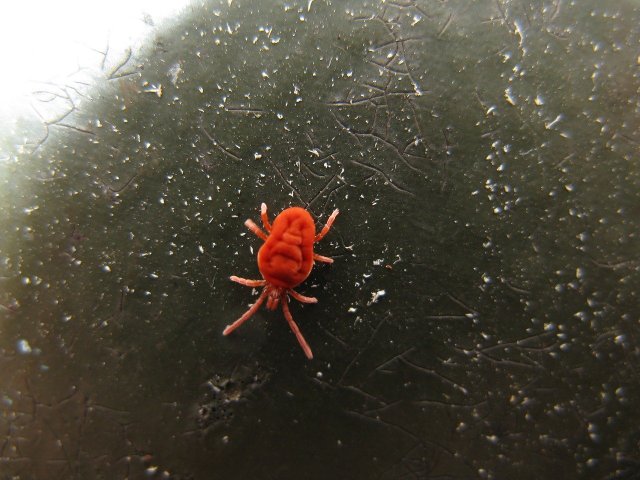Last updated on October 23rd, 2023 at 08:42 pm

If you discover red velvet mites in your garden, there is no need to worry. The beneficial insects are completely harmless – you should not fight them.
If you discover unknown little arachnids in your garden in the summer, you may not be thrilled at first. However, if they are red velvet mites, you don’t have to worry about your plants at all. The red velvet mite, also known as the red velvet spider mite, is a walking mite and is very useful in the garden. It is widespread in Southern and Central Europe. It is often found on the garden or patio floor or on warm walls and stones.
Contents
Red velvet mite: a fact sheet
As already mentioned, the red velvet mite is a predatory mite. It feeds mainly on other mites and their eggs. It prefers to stay in warm, dry places.
You can recognize the red velvet mite quite easily:
- It is one to four millimeters long,
- has a densely hairy body,
- has a velvety appearance,
- is scarlet,
- has long front legs and scissor-like jaw claws,
- as well as a relatively large head with small eyes.
Attention, danger of confusion!

Red velvet mite is easily confused with the fruit tree spider mite. The two are similar in appearance. Unlike the red velvet mite, however, the fruit tree spider mite is a garden pest: as its name suggests, it primarily endangers the fruit harvest.
If you look closely, you can easily distinguish the two mites. The fruit tree spider mite only grows to a maximum length of 0.4 millimeters and is thus significantly smaller. In addition, it has long bristles, light-colored warts and an oval, reddish-brown body.
Red spider mite: This is why you should not fight them
The red velvet mite is one of the beneficial insects in the garden and is not harmful to humans, pets or plants. On the contrary, the little animals feed on plant-damaging insects and their eggs, making them a great helper. For example, they eat slug eggs or aphids.
In addition, the red velvet mite plays a big part in keeping the soil healthy. It belongs to the community of soil arthropods: these break down the soil and help to maintain the soil structure. They also stimulate the formation of humus.
Keeping red velvet mite out of the house
Red velvet mites like to stay in dry, warm places, which is why they occasionally move indoors. Especially in the fall and winter, when it gets cool, they look for sheltered places to overwinter. They also sometimes flock to the patio floor. Find out what you can do about them below:
- Red velvet mites don’t like moisture. You can simply spray your patio floor with a garden hose from time to time.
- Use a close-meshed insect screen on patio and balcony doors.
- Close windows and doors in the evening when it gets cooler.
- Red velvet mites do not like to walk across glass surfaces. If you have the opportunity, you can install a defensive barrier made of thick glass. Glass blocks, for example, come into question here. This, of course, requires more effort and costs and is therefore only an option if you want to remodel your terrace anyway.


